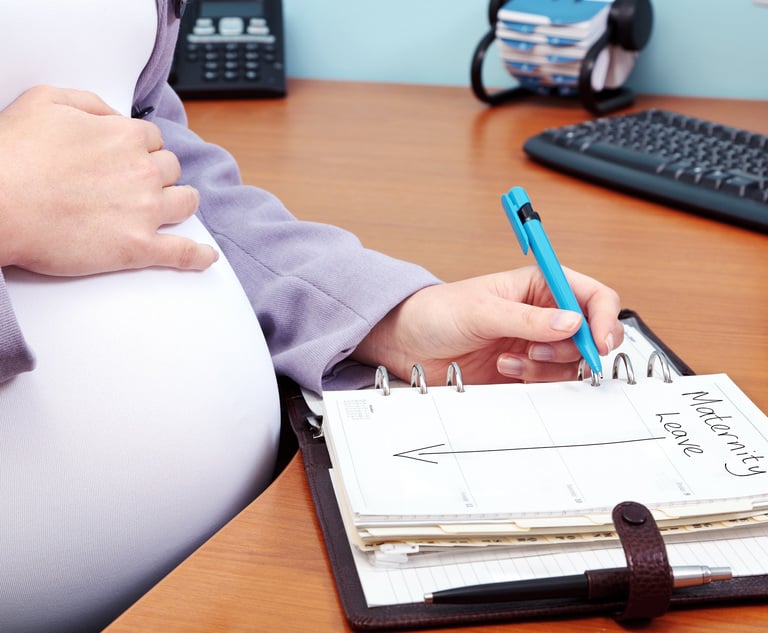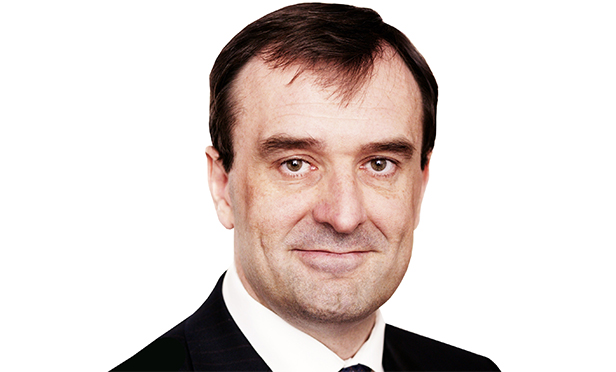Top 20 Legal IT Innovators 2016: Arthur Cox's Padraig O Riordain
Legal Week Intelligence, in association with Fulcrum GT, recently published the first edition of its Top 20 Legal IT Innovators report, which profiles…
January 02, 2017 at 04:46 PM
7 minute read
Legal Week Intelligence, in association with Fulcrum GT, recently published the first edition of its Top 20 Legal IT Innovators report, which profiles the law firm leaders, in-house lawyers and tech pioneers driving change in the legal profession.
Click here to download the report from Legal Week Law (free registration required).
Forged on the back of Dublin's role as both a regional and global hub for tech companies, aircraft finance and pharma businesses, Irish lawyers have a reputation for being innovative. Among them, Padraig O Riordain stands out as a dealmaker, leader and a creative lawyer: both he and his firm, Arthur Cox, have received numerous accolades for innovation.
O Riordain qualified as a barrister in Ireland and then studied law at Harvard. From there, he joined Wall Street firm Hughes Hubbard & Reed before moving to Arthur Cox, where he ran its New York office. "I'm a big believer in just doing the things that really interest you," he says, "and in which you feel you can contribute – because if you do, you do them well and that tends to lead onto other things."
Returning to Ireland in 1989, he became Arthur Cox's managing partner by the age of 37 – the youngest ever in the country at that stage. "The firm had had a very strong business presence," he says, "but not a very strong management culture." So he set about creating one "to release the energy of every partner across the firm", by changing the entire management structure "to a fully professionalised international firm". It was, he adds, "very much bespoke to suit the culture of the firm".
He defines the culture as "a very broad-based leadership where you try to get the best out of absolutely everybody in the firm" and, he adds: "Encourage people to integrate with clients, understand what they are doing and then take that experience and be entrepreneurial with it, both within the firm and externally."
This has led to some pivotal roles for the firm in cross-border deals. The most recent example is an innovative deal last year: Arthur Cox acted for CRH, the Irish construction company, which acquired certain assets from two multinational companies that were merging and required divestments to meet competition requirements: Lafarge and Holcim.
"A €6.5bn acquisition of assets across 11 jurisdictions. As a firm, we led it globally," he says. "Traditionally, a deal of that nature would more likely be led by a magic circle firm or one of the large American firms, but CRH asked us to do it." This meant dealing with with Freshfields Bruckhaus Deringer (for Holcim) and Cleary Gottlieb Steen & Hamilton (for Lafarge) on the other side of the table. "We also had 11 firms internationally working for us in each of the jurisdictions we were buying assets in – a unique position for an Irish firm," he adds.
So what did he learn from the deal? "The better you know your client and the better you genuinely understand the detail of what they're thinking, what their greater context is – their risk thresholds, their balance sheet, all of it – the better you are able to advise as a lawyer."
How does he think that lawyers can innovate on behalf of clients? "One of my favourite professors in college said that law is all about understanding the world. As a student, I didn't really understand that. But later on I did. He was absolutely right: the first thing to do is to really understand the commercial market place in which somebody is operating, the environment.
"Next, know as many of the individuals at your client as possible. Listen to what they are saying. Always ask questions, no matter how stupid or otherwise they might sound, just make sure you understand. Over time, you put together the pieces of the puzzle. This is the overall picture of the client – not just the balance sheet, the technical things, the stock price or the asset that you're buying – it's the interactions of the people, their focuses, their individual objectives."
The spirit of innovation is something O Riordain championed as managing partner. "Some of it is obviously just by example," he says, "to be at the coalface with clients." He has also learnt much about bringing best commercial practice into Arthur Cox as a director of the Paddy Power Betfair board and as chairman of Dublin Airport Authority.
"In those roles, I wear an active business hat – you really experience a company from the inside." He applies his knowledge when doing transactions alongside younger lawyers: "Every day I'll ask them: why are you doing that, or why do you think that way, or did you not consider this in terms of the commercial realities?"
Ireland is a small market that punches significantly above its weight internationally. For Arthur Cox that brings advantages, as O Riordain explains:
If law firms want to embrace "real innovation", which creates value for clients, he suggests the best place to learn "is out in the business world". He therefore reads much more about business and technology than about what other law firms are doing.
"It comes back to what my professor said: it's about understanding the world at all times. The answers lie in making sure you're as helpful and valuable to your clients as possible, therefore understanding the environment that they're living in and the pressures they are facing. Then taking all of the innovations in the world and seeing how you apply those from a legal perspective."
One key example of that innovation comes with what Arthur Cox has done for the Irish Health Service (HSE) during the past five years. The firm combined its management expertise with its own bespoke IT system and then applied it across the health service, with the result that 30 law firms were all on the Arthur Cox system when they were reporting work.
"Historically, the HSE had no central management of legal services, or knew what [it was] spending. We developed the entire way the HSE manages its legal service," explains O Riordain.
"We implemented an Arthur Cox IT system across the entirety of the health service to manage 30 different firms at all sorts of different levels – everything from local issues and district court hearings to childcare, up to the largest of the corporate issues."
He sees it as a fusion of legal expertise, management and IT skills. "We helped reorganise the entire platform; we used our own systems and handed the structure back five years later in working and efficient order to the HSE. It was a very big, innovative project and again something that law firms wouldn't usually do. It was recognising what skills we have: management of legal services is one of them, and so is strategy. We applied all that to the health services here, with very strong results."
This content has been archived. It is available through our partners, LexisNexis® and Bloomberg Law.
To view this content, please continue to their sites.
Not a Lexis Subscriber?
Subscribe Now
Not a Bloomberg Law Subscriber?
Subscribe Now
NOT FOR REPRINT
© 2025 ALM Global, LLC, All Rights Reserved. Request academic re-use from www.copyright.com. All other uses, submit a request to [email protected]. For more information visit Asset & Logo Licensing.
You Might Like
View All
How to Build an Arbitration Practice: An Interview with 37-Year HSF Veteran Paula Hodges

Scratching the Entrepreneurial Itch: Linklaters' AI Head On Becoming a Partner and GenAI Hallucinations

'Relationships are Everything': Clifford Chance's Melissa Fogarty Talks Getting on Big Deals and Rising to the Top
7 minute read
The 'Returnity' Crisis: Is the Legal Profession Failing Women Lawyers Returning From Maternity Leave?
8 minute readTrending Stories
- 1Nondisparagement Clauses in Divorce: Balancing Family Harmony and Free Speech
- 2Survey Finds Majority of Legal Professionals Still Intimidated by AI Despite Need to Streamline Mounting Caseloads
- 3Lessons From Five Popular Change Management Concepts: A Guide for Law Firm Leaders in 2025
- 4People in the News—Jan. 15, 2025—Ballard Spahr, Brahin Law
- 5How I Made Office Managing Partner: 'Stay Focused on Building Strong Relationships,' Says Joseph Yaffe of Skadden
Who Got The Work
J. Brugh Lower of Gibbons has entered an appearance for industrial equipment supplier Devco Corporation in a pending trademark infringement lawsuit. The suit, accusing the defendant of selling knock-off Graco products, was filed Dec. 18 in New Jersey District Court by Rivkin Radler on behalf of Graco Inc. and Graco Minnesota. The case, assigned to U.S. District Judge Zahid N. Quraishi, is 3:24-cv-11294, Graco Inc. et al v. Devco Corporation.
Who Got The Work
Rebecca Maller-Stein and Kent A. Yalowitz of Arnold & Porter Kaye Scholer have entered their appearances for Hanaco Venture Capital and its executives, Lior Prosor and David Frankel, in a pending securities lawsuit. The action, filed on Dec. 24 in New York Southern District Court by Zell, Aron & Co. on behalf of Goldeneye Advisors, accuses the defendants of negligently and fraudulently managing the plaintiff's $1 million investment. The case, assigned to U.S. District Judge Vernon S. Broderick, is 1:24-cv-09918, Goldeneye Advisors, LLC v. Hanaco Venture Capital, Ltd. et al.
Who Got The Work
Attorneys from A&O Shearman has stepped in as defense counsel for Toronto-Dominion Bank and other defendants in a pending securities class action. The suit, filed Dec. 11 in New York Southern District Court by Bleichmar Fonti & Auld, accuses the defendants of concealing the bank's 'pervasive' deficiencies in regards to its compliance with the Bank Secrecy Act and the quality of its anti-money laundering controls. The case, assigned to U.S. District Judge Arun Subramanian, is 1:24-cv-09445, Gonzalez v. The Toronto-Dominion Bank et al.
Who Got The Work
Crown Castle International, a Pennsylvania company providing shared communications infrastructure, has turned to Luke D. Wolf of Gordon Rees Scully Mansukhani to fend off a pending breach-of-contract lawsuit. The court action, filed Nov. 25 in Michigan Eastern District Court by Hooper Hathaway PC on behalf of The Town Residences LLC, accuses Crown Castle of failing to transfer approximately $30,000 in utility payments from T-Mobile in breach of a roof-top lease and assignment agreement. The case, assigned to U.S. District Judge Susan K. Declercq, is 2:24-cv-13131, The Town Residences LLC v. T-Mobile US, Inc. et al.
Who Got The Work
Wilfred P. Coronato and Daniel M. Schwartz of McCarter & English have stepped in as defense counsel to Electrolux Home Products Inc. in a pending product liability lawsuit. The court action, filed Nov. 26 in New York Eastern District Court by Poulos Lopiccolo PC and Nagel Rice LLP on behalf of David Stern, alleges that the defendant's refrigerators’ drawers and shelving repeatedly break and fall apart within months after purchase. The case, assigned to U.S. District Judge Joan M. Azrack, is 2:24-cv-08204, Stern v. Electrolux Home Products, Inc.
Featured Firms
Law Offices of Gary Martin Hays & Associates, P.C.
(470) 294-1674
Law Offices of Mark E. Salomone
(857) 444-6468
Smith & Hassler
(713) 739-1250









